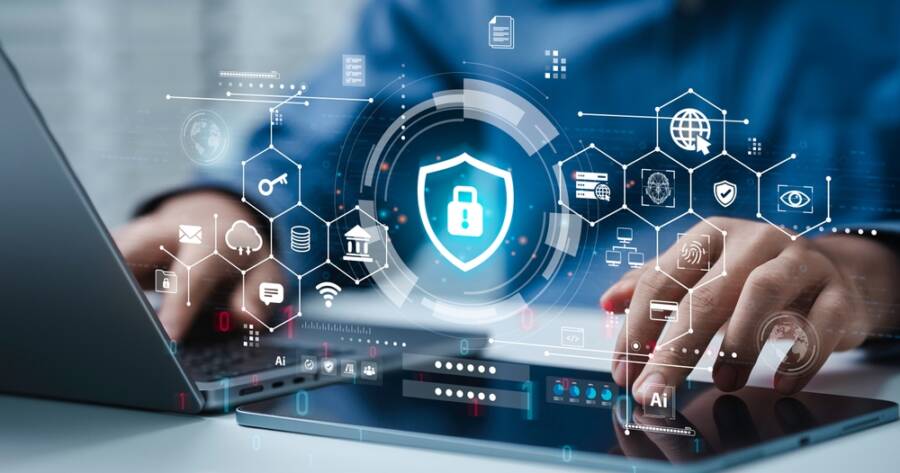Digital learning has opened new doors for collaboration and creativity but it’s also created new risks. From phishing scams to weak passwords, online threats can compromise privacy, data, and even student safety. As classrooms move further into the digital world, cybersecurity has become a shared responsibility for everyone. Staying secure isn’t just about using the right tools—it’s about building habits that protect both personal and school information every single day.
Protect Your Passwords Like Your Grades Depend on It
Passwords are your first line of defense against cyber threats, yet many people reuse the same one across multiple accounts. Strong, unique passwords dramatically reduce the risk of unauthorized access. Aim for a mix of upper and lowercase letters, numbers, and symbols—and avoid anything easily guessed, like birthdays or pet names. Using a passphrase, such as “Coffee&Curiosity2025,” can make your password memorable yet hard to crack.
Password managers are a great investment for both students and educators. They securely store all your passwords in one encrypted vault and generate strong alternatives automatically. Never share your login information with anyone, even trusted classmates or colleagues. A well-guarded password is the simplest, most effective barrier against cyber intruders.
Stay Alert for Phishing and Scams
Phishing attacks remain one of the most common ways hackers steal information. These scams often appear as legitimate emails, messages, or links—sometimes even disguised as your school or a familiar contact. They might ask for personal details, login credentials, or payment information. Always verify the sender’s email address and avoid clicking suspicious links or attachments.
If something feels off, it probably is. Hover over links to check their destination before clicking, and contact your school’s IT department if you suspect a fake message. Encouraging digital skepticism among students helps build lifelong awareness. A quick pause before clicking can prevent major consequences—from compromised accounts to stolen identities.
Use Secure Networks and Avoid Public Wi-Fi
Free Wi-Fi in coffee shops or libraries might seem convenient, but it often lacks the security protections needed to keep your data safe. Hackers can easily intercept information transmitted over public networks, including passwords and personal files. When possible, connect only to trusted, password-protected networks.
If you must use public Wi-Fi, consider activating a Virtual Private Network (VPN) to encrypt your connection. VPNs mask your activity, making it far harder for outsiders to track or steal information. For educators and students alike, secure connections ensure that schoolwork, grades, and communication stay private—no matter where learning takes place.
Keep Your Devices and Software Updated
Updates may feel inconvenient, but they often contain crucial security patches that close off vulnerabilities hackers could exploit. Ignoring them leaves your devices (and your data!) at risk. Make it a habit to enable automatic updates for your operating system, browsers, and key applications.
The same goes for antivirus and anti-malware software. Regular scans detect and remove threats before they cause damage. Educators should encourage students to keep both school and personal devices up to date, especially if they access shared platforms. Staying current with updates is like locking your digital doors every night—it keeps intruders out and peace of mind intact.
Safeguard Personal and School Data
Digital classrooms often involve sharing sensitive information, like grades, assignments, student data, and communications. Protecting that data starts with understanding what’s private and how it’s stored. Always use password-protected accounts for schoolwork and avoid saving sensitive information on shared or public computers.
Backing up files regularly, either through cloud services or external drives, ensures you won’t lose important documents to cyber incidents or system crashes. Educators should remind students not to share personal information online unnecessarily. Data security isn’t just about avoiding hacks—it’s about respecting privacy, maintaining trust, and ensuring a safe digital learning environment for everyone.
Teach and Practice Digital Citizenship
Cybersecurity education isn’t only about protection—it’s about responsibility. Teaching digital citizenship encourages students to think critically about how they interact online. Discussing topics like privacy settings, safe sharing, and ethical internet behavior helps create a culture of awareness.
Teachers can model good habits by demonstrating secure practices during lessons, like verifying websites before downloading materials or discussing real-world examples of cyber risks. When security becomes part of everyday conversation, it stops being intimidating. Students learn that being safe online isn’t about fear—it’s about empowerment and accountability in an increasingly connected world.
Staying Safe in a Digital World
Technology has transformed learning, but safety must evolve alongside it. Cybersecurity isn’t just for IT experts; it’s a shared skill that protects everyone in education. When students and teachers commit to strong passwords, secure networks, and mindful online behavior, digital learning becomes both innovative and safe. Staying vigilant today ensures a secure foundation for the classrooms of tomorrow, where technology supports growth, creativity, and confidence without compromise.

